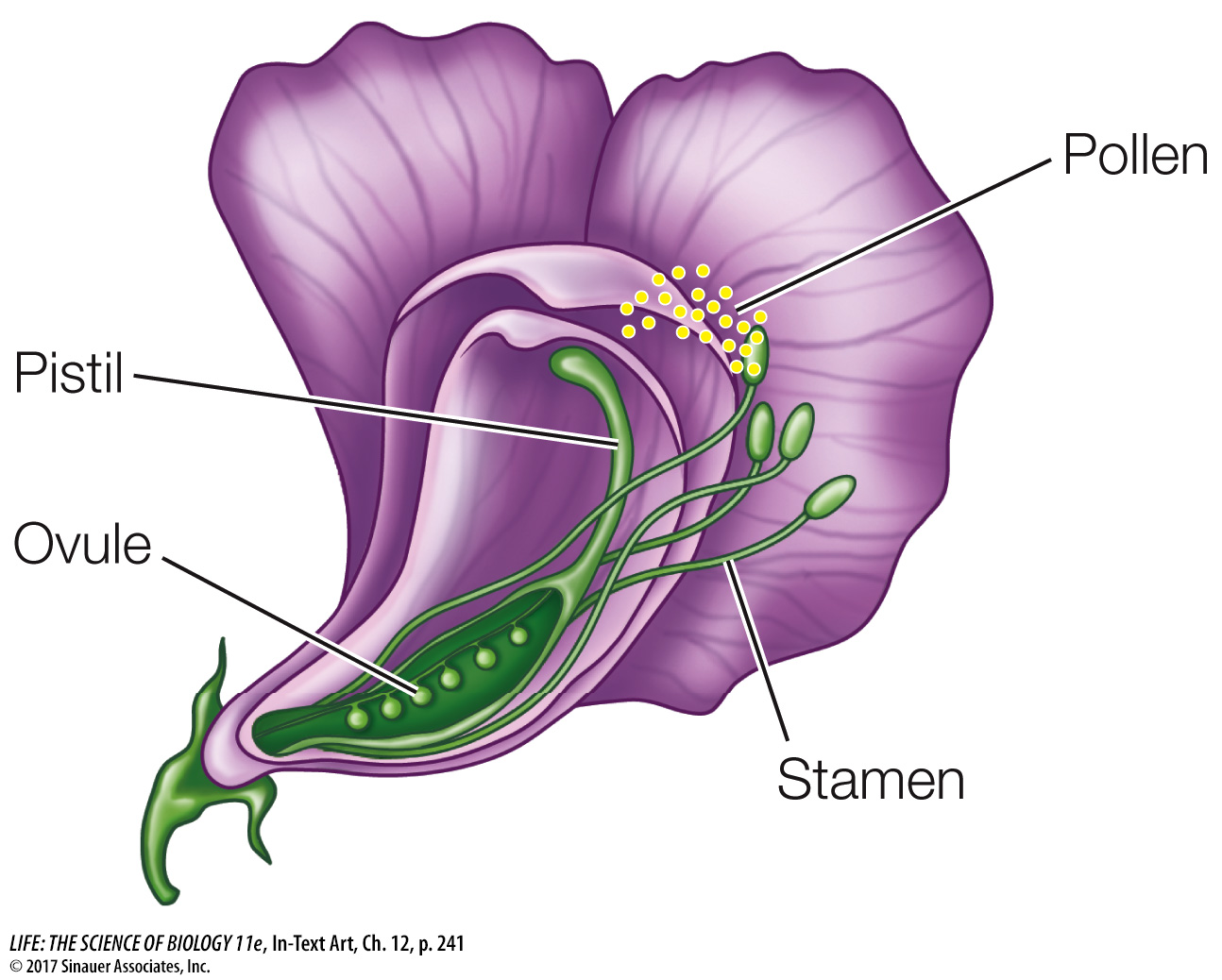Mendel’s laws arose from controlled crosses of pea plants
After entering the priesthood at a monastery in Brno, in what is now the Czech Republic, Gregor Mendel was sent to the University of Vienna, where he studied biology, physics, and mathematics. He returned to the monastery in 1853 to teach. The abbot in charge had set up a small plot of land to do experiments with plants and encouraged Mendel to continue with the experiments. Over seven years, Mendel made crosses with many thousands of plants. Analysis of his meticulously gathered data suggested to him that inheritance was due to particulate factors.
Mendel presented his theories in two public lectures in 1865 and a detailed written publication in 1866, but his work was ignored by mainstream scientists until 1900. By that time, the discovery of chromosomes had suggested to biologists that genes might be carried on chromosomes. When they read Mendel’s work on particulate inheritance, the biologists connected the dots between genes and chromosomes.
Mendel chose to study the common garden pea because of its ease of cultivation and the feasibility of making controlled crosses. Pea flowers have both male and female sex organs: stamens and pistils, which produce gametes that are contained within the pollen and ovules, respectively.

Pea flowers normally self-
There are many varieties of pea plants with easily recognizable characteristics. A character is an observable physical feature, such as seed shape. A trait is a particular form of a character, such as round or wrinkled seeds. Mendel worked with varieties with contrasting traits for seven characters such as seed shape, seed color, and flower color. These varieties were true-
As you will see, Mendel proposed a set of hypotheses to explain the inheritance of particular pea traits, and then designed crossing experiments to test his hypotheses. He performed his crosses in the following manner:
He removed the stamens (male parts) from flowers of one parental variety so that it couldn’t self-
fertilize. Then he collected pollen from another parental variety and placed it on the pistils of the emasculated flowers. The plants providing and receiving the pollen were the parental generation, designated P. In due course, seeds formed and were planted. The seeds and the resulting new plants constituted the first filial generation, or F1. (The word “filial” refers to the relationship between offspring and parents, from the Latin filius, “son.”) Mendel examined each F1 plant to see which traits it bore and then recorded the number of F1 plants expressing each trait.
In some experiments the F1 plants were allowed to self-
pollinate and produce a second filial generation, or F2. Again, each F2 plant was characterized and counted.